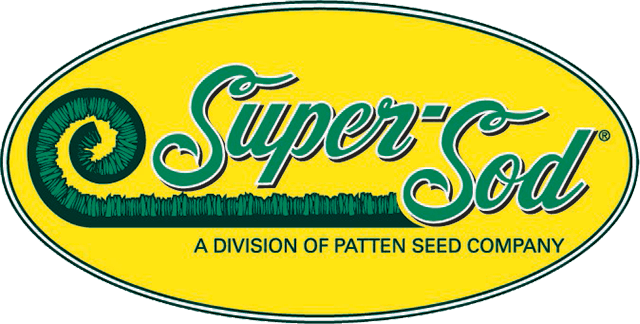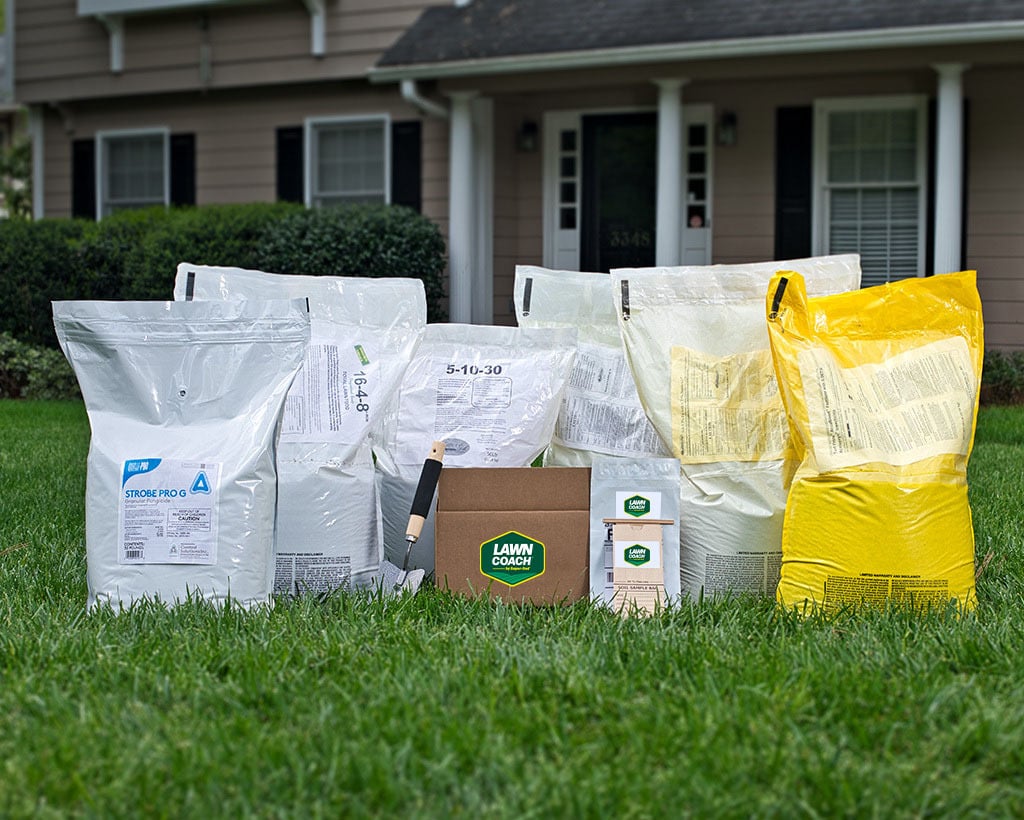

The current featured weed is Digitaria aka crabgrass.
There are several types of crabgrass weeds; the most common in the Southeast being large crabgrass, Digitaria sanguinalis. We'll cover how to identify and control it.
Everybody knows the name crabgrass, but few know how to get rid of it. The good news is that since crabgrass is an annual grass, that makes weed control easier than most!
Viewing Tip: Increase the volume and the playback speed according to your preferences. Volume control is the speaker icon on the lower left; playback speed is the gear button on the lower right.
Large Crabgrass ID Features:
To control crabgrass, we first need to learn how to identify it.
- Family: Crabgrass is an annual plant in the Poaceae family, commonly called the grass family.
- Habit: Crabgrass starts from a central crown, then sprawls in a crab-like fashion. Hence, crabgrass.
- Flowers: Grassy, green-colored flower and seed heads with 7 to 10 racemes.
- Leaves: Large blades that give it a coarse texture and are larger than any lawn grass.
- Stems: Large crabgrass has burgundy (reddish brown) stems that root at the nodes. This color and the nodal rooting are important identification features. The stems of "large crabgrass" are slightly hairy, though the stems of "hairy crabgrass" are remarkably more hairy and once you see hairy crabgrass, you'll easily tell the difference between the two.
A large, sprawling crabgrass weed that found purchase in a bare spot without mulch.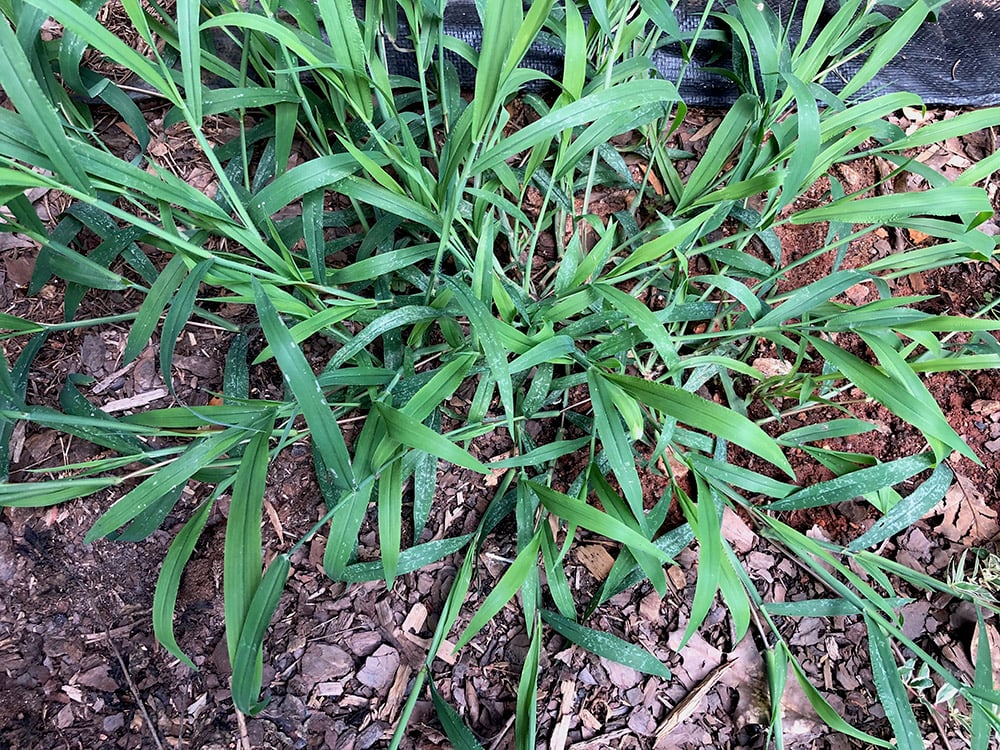
Sprawling and more crab-like habit of large crabgrass that found a place to germinate in fire pit rocks, with a visible center crown.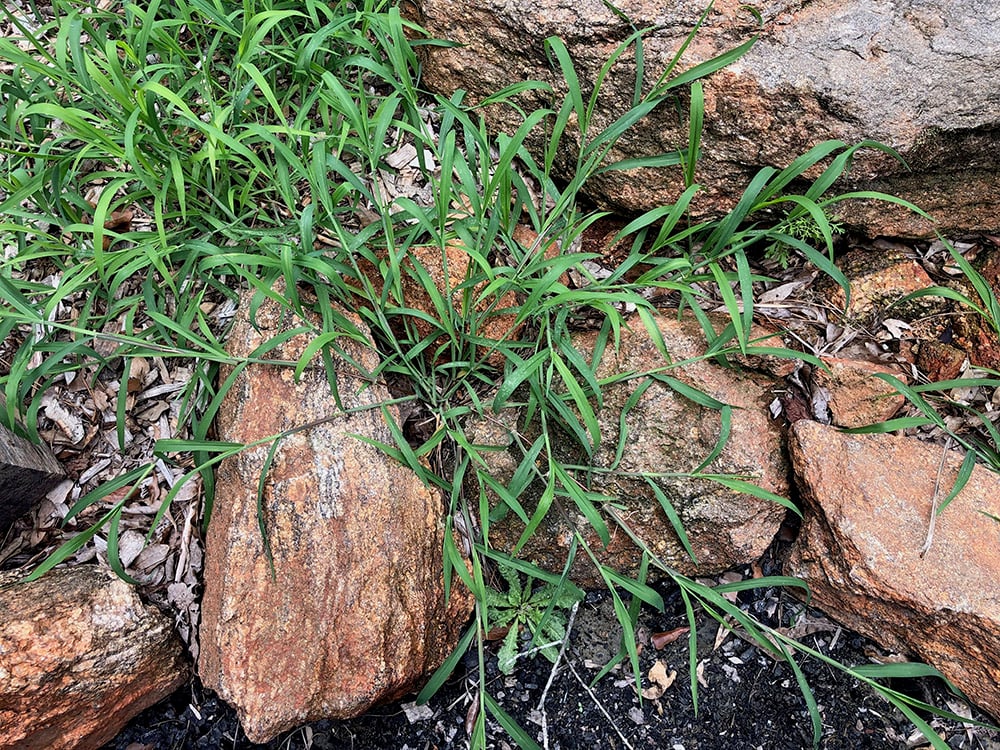
The center crabgrass crown showing hairy stems and the reddish brown stems.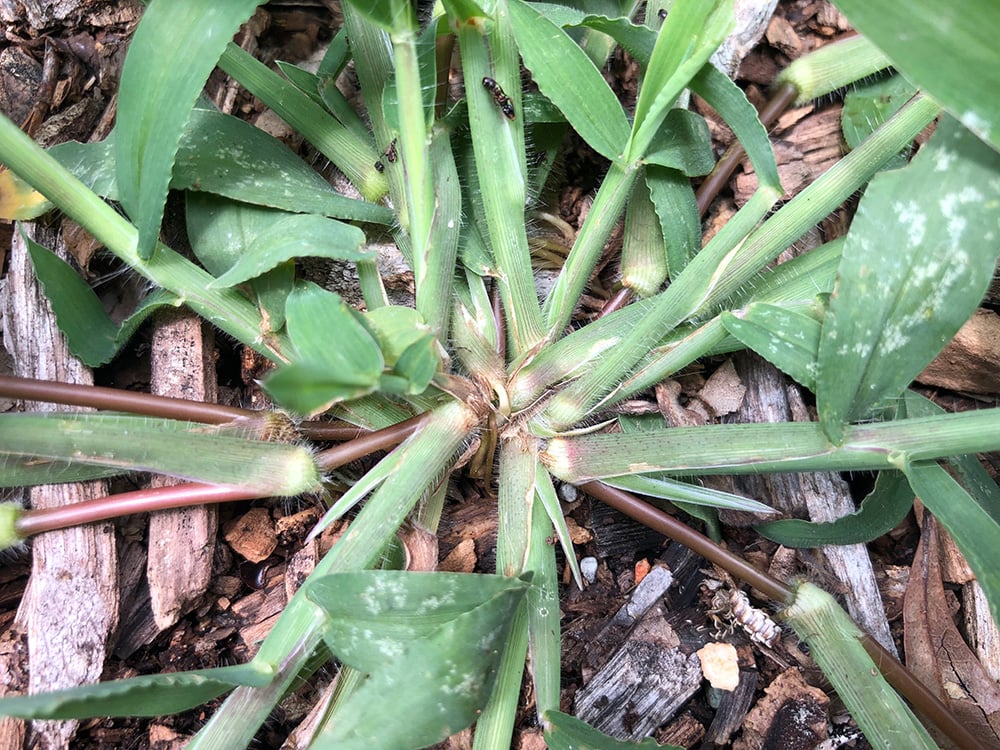
Note the reddish brown stems, the hair on the leaves, and the roots forming at the leaf nodes on large crabgrass.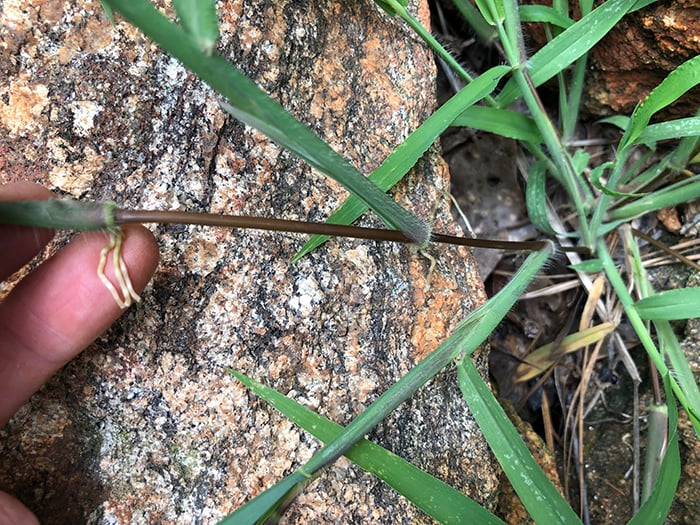
Flower head of large crabgrass showing 8 racemes.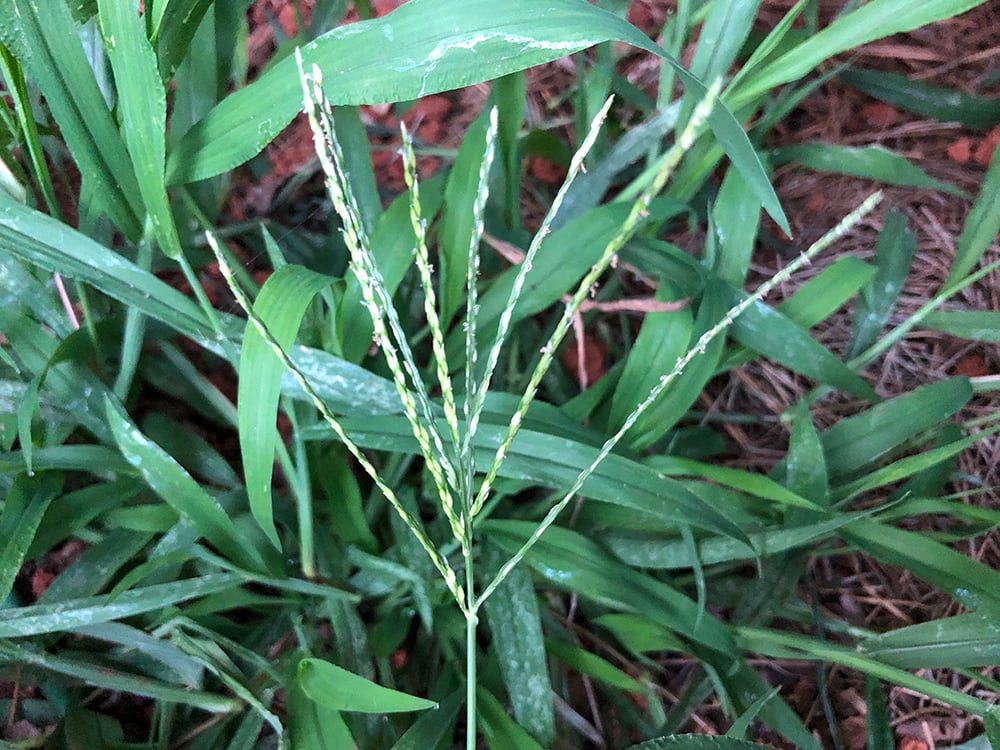
There are many different types of crabgrasses in the Southeast. If you're a beginner at learning weeds, just getting it to the level of crabgrass is a great start. Besides large crabgrass, you're most likely to find smooth crabgrass. It is less hairy, has shorter leaves, and grows in a tighter clump.
Learn more about large crabgrass from these websites:
- NC State Extension lists several crabgrasses & related species
- Clemson Home & Garden Information Center has a general article on crabgrass species
- UGA has crabgrasses listed in its database
There are two look-alikes, dallisgrass and goosegrass, that are featured in our other "weed of the month" articles. I want you to be aware of them so you can rule them out as you learn about crabgrass weed control. It's especially important to rule out dallisgrass because it has a different lifecycle and eradication strategy.
Eat it or Treat it - How to Control Crabgrass
Crabgrasses are in the Poaceae family and are technically edible. It takes a lot of work to harvest their seeds by hand, though this is a useful foraging tip if you're entering one of those survivalist TV shows.
Crabgrass Weed Prevention:
- #1 Best tip for Crabgrass Control: In February spread pre-emergent herbicide to prevent germination of summer weeds, such as crabgrass. Crabgrass germinates early in winter so if you have a crabgrass infestation, we recommend you don't miss applying pre-emergent in early February. If you subscribe to our email we'll send you an email reminder or sign up for Lawn Coach and we'll send the pre-emergent to you at the right time.

- Prevent crabgrass in beds with thick layers of mulch and by cultivating a thick, healthy lawn.
Manual Removal of Crabgrass:
- Hand pull - It can become a big plant, but it's easy to pull up by yanking it by the crown. My favorite tool for weed management is a type of hoe called a CobraHead long handle weeder because the long handle that saves my back from stooping. With this tool I keep standing to snag the crown, pull it out, then with a flick of the tool toss it aside. Very satisfying.
- Mow to keep larger plants from going to seed.
- Time/Patience: Crabgrasses are annuals that will be killed by frost in autumn. Sometimes time/patience feels like hard manual labor, doesn't it?
Chemical Control of Crabgrass Weeds:
- Use a post-emergent herbicide for grassy weeds, such as Conduit, in Bermuda and Zoysia lawns. Always apply according to directions on the label and use a surfactant to help it stick. Order grassy weed control products for shipment or schedule it for pick up at your local Super-Sod.

Since recording the video, we have learned that Tenacity, previously only available to licensed commercial applicators, is now available to homeowners for crabgrass control on Centipede lawns. Please test it on a section of your Centipede lawn before applying it to the entire lawn and carefully follow the directions on the label. *Tenacity is labeled as safe for Tall Fescue and Centipede lawns, but it's not save for Bermuda and Zoysia lawns. Please carefully read and follow the directions on the bottle.
Questions? Leave a comment below.
If you're a weed aficionado like me, check back here for future Weeds of the Month. Until then, happy weeding!
All pictures by Hillary Thompson.

